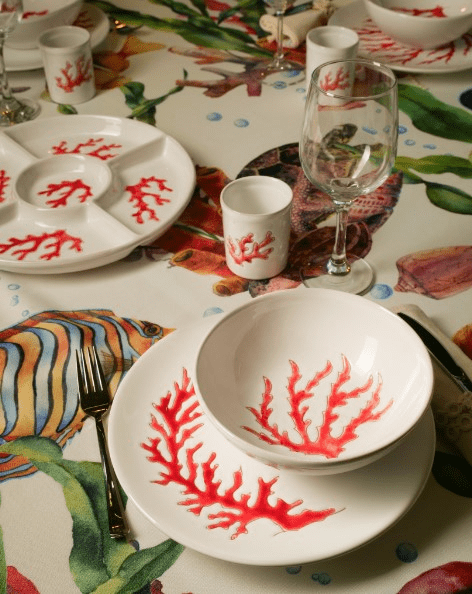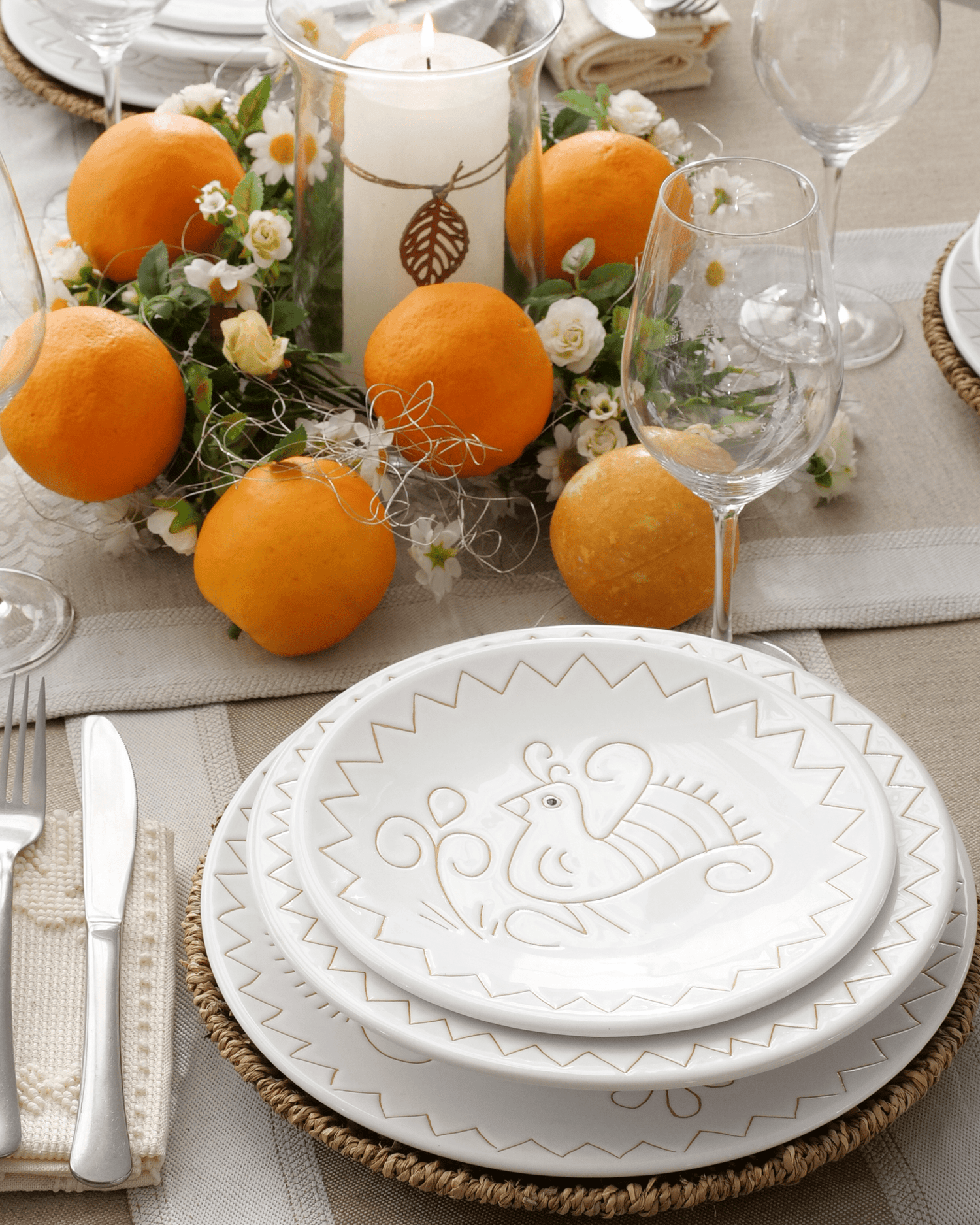
Ceramic Vases
Furnishing with Flowers
Floral arrangements can be a real touch of class for your home decor, so it's important to know how to match them best. First of all, it's essential to consider the style of the decor: if you have a minimalist home, for example, it might be better to choose a floral arrangement with few colors and essential shapes.

For example, in the red arrangement with celosia, hypericum, alstroemeria, and birch branches, the red carnations are the dominant color. The pink and white accents of the hypericum soften the overall look, while the red birch branches add verticality, echoing the coral decoration of the vase. The final touch of the alstroemeria—also known as the Peruvian Lily—provides great satisfaction in a home arrangement because it has a long-lasting presence from bud to full bloom. Among its qualities, it's worth noting that it is not an especially expensive flower and is easy to find.

On the other hand, if you prefer a more rustic or romantic style, you can opt for richer and more colorful arrangements that convey positivity and cheerfulness. Here, in the yellow arrangement, there are carnations, lilies, solidago, and sunflowers in a beautiful white vase, featuring the traditional stylized Sardinian peacock. Carnations allow for a lot of play with colors because they come in many shades. In Japan, they symbolize good wishes and swift recovery, while in Europe they express feelings of romantic admiration. Additionally, carnations (along with lilies) are excellent allies in floral arrangements as they are very resilient flowers that last a long time, making them ideal for people who enjoy creating weekly arrangements for their home. Lilies also mark the passage of time: as the days go by, it's interesting to observe their evolution from bud to full bloom. If you want to add a more rustic touch, the sunflower, a heliotropic plant (which follows the sun), is a perfect choice to bring a touch of cheerfulness to the environment.
Decorated ceramic vases

To keep in mind: Before giving a vase or a floral arrangement, let’s be inspired by the colors of the recipient’s furnishings and walls. These are important clues to understand personal tastes, ensuring that the gift will be well-received. We can decide whether to play on color harmonies, matching the flowers with colorful details (like curtains and cushions), or to use contrast, pairing vibrant floral compositions with very neutral décor to create a dynamic effect that stands out in the room.
We thank the florist Chiara de Giorgi (from the Frida shop in Cagliari) for these valuable tips and for these beautiful floral arrangements.
How to use a ceramic vase?
Our furniture—the living room table, the hallway console, even the nightstand—is like a stage, ready to showcase true pieces of art, perfectly framed by the home’s walls. Therefore, we need to let both the vase and the flowers "take center stage," choosing the right proportions and shapes.

First, it’s important to select a vase that fits the size of the surface it rests on, and thus the floral arrangement. If the arrangement is very large, a vase that, in both material and shape, can support the visual weight will be necessary. Conversely, if the arrangement is smaller, a more delicate and slender vase might be more suitable. In any case, avoid having a vase that is too large on a nightstand or a flimsy and fragile vase lost on a large table.

Secondly, it's important to consider the style of the flowers and the vase. If the floral arrangement has a classic and sophisticated style, a ceramic or transparent glass vase might be preferable. On the other hand, if the arrangement has a more rustic and natural style, a terracotta or wooden vase might be more suitable. Finally, you can play with the colors of the vase and the flowers to create a pleasing and harmonious color effect. For example, if the floral arrangement consists of yellow and orange flowers, you might choose a vase with details in warm tones like red or brown. In short, matching the right vase to the floral arrangement is an art that requires care, attention, and creativity to create a truly unique and extraordinary visual effect.
-

Coral Collection
Finely decorated in red, blue, and turquoise, a clear reference to the...
-

Turquoise Pavoncella Collection
The Pavoncella is the true symbol of Sardinia. Once an ancient amulet...
-

White Pavoncella Collection
Our most elegant collection. Our Pavoncella embodies elegance and refinement, with a...





